
“JUST A BRUTAL TIME OF YEAR”
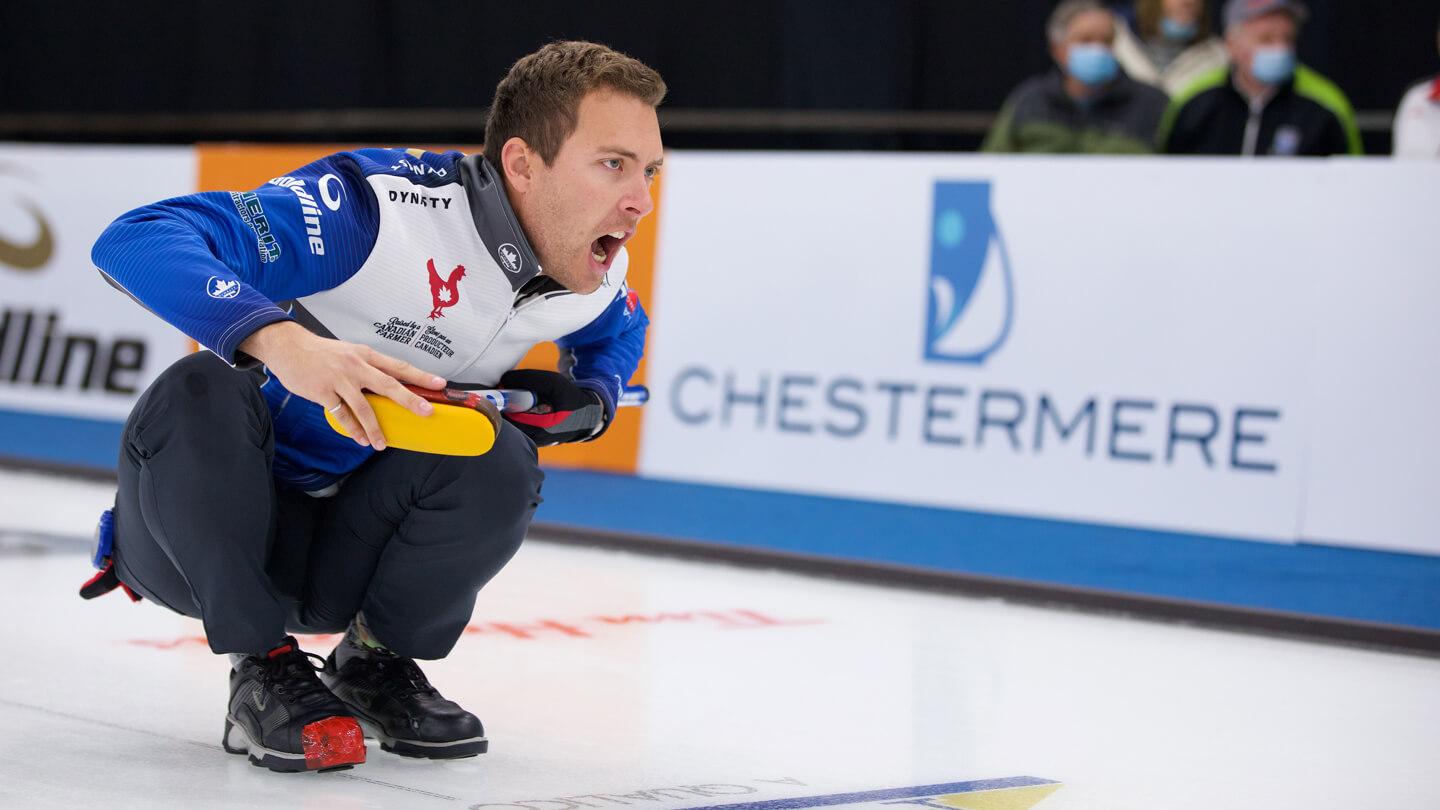
K
arlee Burgess was getting ready to go to her boyfriend’s house for dinner when her cell phone rang, a call from a number she didn’t recognize. Burgess picked up anyway, and once she heard who was on the other end of the line — a cheery voice that said, “Hi, Karlee!” and then identified herself — Burgess’s jaw dropped. She acted cool, but her mind was racing. She asked for a second and walked to her bedroom to continue the conversation as quietly and calmly as she could.
Burgess had just competed in her second straight Scotties with Team Zacharias, the 2022 Manitoba and 2020 world junior champions. The third shares a house in Winnipeg with her skip Mackenzie Zacharias, second Emily Zacharias and lead Lauren Lenentine, and Burgess had moved across the country a couple years ago so they could live and practice together. The dedication and hard work paid off for the team whose average age is just shy of 22: They ranked 14th in the world this season. That they were staying together to see out their potential was a given.
Well, at least it seemed like a given up to the moment Burgess got that phone call. And though the oldest member of the team was talking quietly, her teammates could hear Burgess’s side of the conversation, and they knew the 23-year-old was talking to a curler about another opportunity. When Burgess called a team meeting a couple days after that call, her teammates were understandably afraid that their third had taken up an offer she felt she couldn’t refuse. They’d even asked Sheldon Zacharias, Mackenzie and Emily’s dad who doubles as their coach, who they might bring in if Burgess jumped ship.
As she sat in the living room with her teammates just before the meeting began, Mackenzie was convinced Burgess was leaving. “But what Karlee told us, we did not see coming,” the 22-year-old says now, with a laugh. “It was a complete shock.”
Burgess explained it was none other than Jennifer Jones who’d called up and started the wheels turning. Together, Burgess and Jones had devised a plan that Burgess was now presenting to the Zacharias sisters and Lenentine: Would they be willing to become a five-woman team, to be Team Jones, to be skipped by the 47-year-old who, for their money and most everybody else’s, is the greatest of all time?
Mackenzie repeats the word “shock” four times in the space of a minute as she recalls hearing that pitch. The team had a good talk about what it would mean to have five players, with position changes since Jones would skip and one player would have to sit out each game. But it didn’t take long for them to agree. “When you have the best player in history and an amazing human — she’s so nice — wanting to play with us?” Burgess says. “It’s like, holy crap, we’ve got to take this opportunity.”
Team Jones is hardly alone in blowing up its roster ahead of next season. It’s the teams who stuck together that are the anomaly at the top of Canadian curling. The end of an Olympic cycle is always rife with change as teams reshuffle and try to find that perfect foursome to get them to that biggest stage in four years’ time, but 2022 truly is something else. It’s as though the all-star teams — with a few exceptions — jumped into a bin, got shook up and came out with new looks. “I’ve never seen it quite like this,” says Olympic gold medallist, Eve Muirhead, who’s been watching the Canadian team announcements closely from Scotland. “It’s hard to keep up, isn’t it? I’ve seemed to lose track of who’s playing with who.” Us too, Eve.
And what makes all this movement in Canada’s elite curling scene even more intriguing is this isn’t a sport with money dictating moves and general managers calling the shots. Since it’s the players managing their teams and representing themselves, this whole process is emotional as all get-out. “In a way, it would be easier curling with people that you didn’t care about,” says skip Matt Dunstone, who gets a little misty-eyed at the thought of his recent breakup with all three of his teammates. “It’s just a brutal time of year.” You won’t find a curler who likes it, but it’s oh so much fun for fans, who stoke a rumour mill that rolls out storylines in soap opera fashion. World No. 1 skip Brad Gushue calls it all “a little bit gossipy, a little bit kind of sly,” and “kinda like a dating scene, to be quite honest, in junior high or high school.”
Two-time world champion Kevin Koe heard more than a few rumours of what his next team was going to look like. “And I mean, everyone says, ‘This team will be good,’ or ‘That team’s going to be great.’ But the players don’t even know if the team will be good,” Koe says with a shrug. “Until you play together, you don’t know. You just hope.”

N
obody has more fans in the ENMAX Centre tonight than Darren Moulding. A group of ladies wear yellow sparkly bunny ears with his name markered on them, “Darren” on one ear and “Moulding” on the other. Fans yell, “Go get ‘em, Darren!” and pump their fists. Moulding’s smiling face is featured on a number of homemade signs in the stands. But the real deal isn’t smiling: He’s staring down his former teammates, straight-faced under the brim of his team ballcap, as this game is about to get underway.
This is Moulding’s sixth appearance at the Brier, and first since he won it a year ago with Team Bottcher. But in December, just three months before this 2022 edition, where Bottcher’s Alberta squad was set to compete at home in Lethbridge as Team Canada and reigning champions, the skip announced the team was ending its five-year relationship with Moulding. The decision came mid-season, just like that. And while Team Bottcher’s statement said the third was stepping away for personal reasons, the 39-year-old Moulding immediately set the record straight: He didn’t need time away. Three weeks later, he joined Team New Brunswick.
The Saturday night tilt between Canada and NB delivers: It’s tied 4-4 heading into the final end, and Team Bottcher has the hammer. The crowd is cheering: “Let’s go Moul-ding!” (Clap, clap, clap-clap-clap!) As Botcher gets set to take his last shot, fans let out a “Boooo…ttcherrrrr” chirp. They’ve also been booing his team, the home team, on-and-off since this game started. But Bottcher’s final shot is good for two and the win.
Moulding shakes his old teammate’s hands, he signs autographs, he takes selfies with fans and then he picks up his six-year-old son, Brady, for a hug. That’s when the tears start to fall. Moulding leaves the ice holding a sign taped to a hockey stick and featuring his smiling face. He wipes away tears as he gets ready for interviews. “Just one sec,” he says. “I’ll be fine.”
The Team Bottcher breakup in December not only set up the most raucous matchup of the 2022 Brier, it also signaled the start of the major shakeups to come. “It’s very unusual that you’d get rid of someone in the middle of the year,” says two-time world champion skip Jeff Stoughton. “I think this maybe caught the curling community off guard, like, ‘Okay, they made the change right away.’ It got people wondering what might happen next.”
Glenn Howard has heard plenty of rumours swirling at the Brier. “It’s going to be a free for all,” he says, just after his Ontario team beats a young squad from Newfoundland in round robin play. “I really do think most of the top teams here, the rumour is, they’re all blowin’ up. Which is really bizarre. It seems to be every quadrennial now — since [curling]has been in the Olympics.”
Howard hates this time of year, perhaps more than anyone. The 59-year-old’s face scrunches up and he says “horrible” three times just thinking about free agency. “I’m a team guy,” Howard says. One of the toughest moments of his career was having to tell his long-time friend and teammate, Craig Savill, that he was looking to make a change to the team to accommodate his son, Scott. “I said, ‘Craig, I hope you understand, I want to finish my career with my son,’” Howard says. “And he was so good about it, he was terrific. But that was awful, it’s just — thank God it hasn’t come between us, like we’re still good buddies and he accepted it, but it’s awful to do that. If we were to ever lose a friendship over that, it would kill me for a lifetime. I would just never get over it.”
Howard’s name is in the rumour mill this week, because once again many people believe he’s going to retire. There are rumours of the same about Koe, Gushue, and Jones on the women’s side — all because of their ages. It’s unfair and stupid, given all four skips are ranked in the world’s Top 10. Team Jacobs third Marc Kennedy, who has heard he’s going to skip his own team next season (he’s not), understands why that talk is floating about. “Part of those rumours is probably other curlers spreading it in hopes that some of those guys will retire, right? Even for me, now, like Koe’s gotta shut it down soon, right?” Kennedy says, laughing. “Like, please?” It would make Kennedy’s home province of Alberta a heck of a lot more hospitable.
Val Sweeting is in distinct company since her Team Einarson is sticking together after winning three straight Scotties titles. The third remembers her name whirling around at the end of the last four-year cycle. “Someone was like, ‘Oh, I actually heard you’re playing for four different teams,’” Sweeting says. “I’m not even kidding. I literally had not talked to anyone yet about moving forward.”
What bothers Sweeting most about this time of year is how early it comes. These talks should happen at the end of the season, she argues, not in the middle of it, and certainly not before and even during a national championship — the biggest event on the calendar, save for the quarterly Olympic Trials. After the Brier and Scotties, there are also two remaining Grand Slam events on the calendar.
But talks start early because if you snooze, you might lose. Koe knew by December that his team was breaking up after this season, and he reached out to Tyler Tardi that same month to ask the talented young skip to “keep me in mind.” Tardi did and in late April the news was official: Koe would have a whole new squad, including 23-year-old Tardi at third. “It’s not like these teams are made after the Brier,” Koe says, with a wry smile. “Most of them were made before.”
Koe is parting with his long-time lead, Ben Hebert, after eight years together. The pair played with Kennedy on a team that represented Canada at the 2018 Olympics and won the 2016 world championship, and Koe says he heard rumours before the 2022 Brier that Hebert and Kennedy were reuniting. Kennedy and Hebert both say it wasn’t made official until after the Brier was over, when Kennedy found out his skip, Jacobs, was taking a step back. But the rumour mill sometimes sells goods before they’re even officially on the shelf.
By the end of the Brier, in mid-March, almost every new team was ironed out. And the season still had a month and a half remaining, ending with the Champions Cup, which wraps up today in Olds, Alta. Nearly every Canadian team is playing there with the knowledge that they’re making a major change next season. “I’ll use the analogy of Auston Matthews,” says veteran lead Brent Laing, a Leafs fan whose new team is going to be announced at the very end of this season. “It’d be like him saying, ‘Hey, I can’t wait to finish the season with the Leafs, hopefully finally win a playoff series, but before that I can’t wait to let everybody know that I’m going to play in Montreal.’
“Like, how does that make any sense?” Laing asks. “It’s crazy.”
He believes a players’ association is needed to help ensure free agency doesn’t happen mid-season, because it’s a distraction. Too many players are scrambling, not wanting to be left on the outside looking in, which only creates chaos.
“It’s just like Survivor,” Laing says.
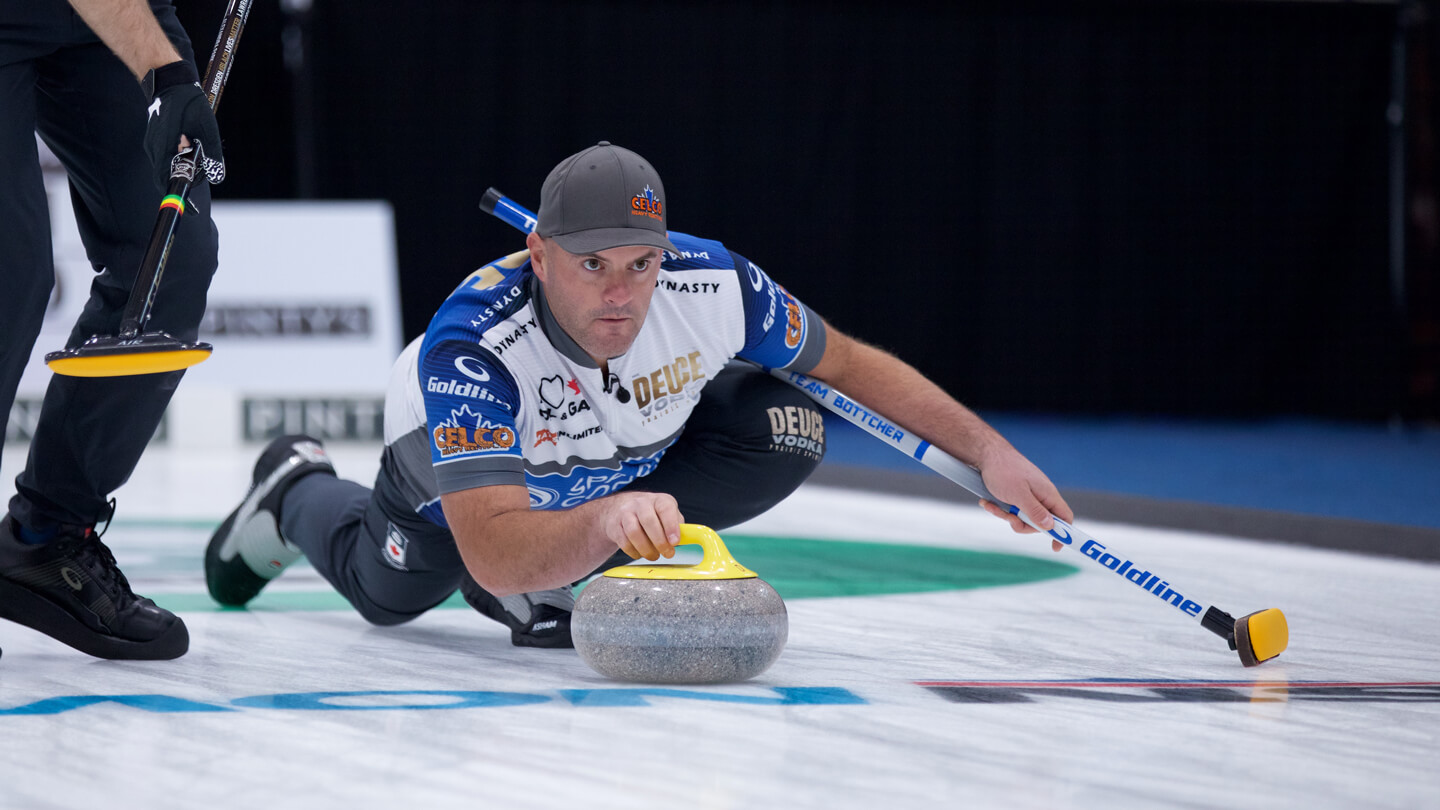
J
ocelyn Peterman is sitting by a pool in the lobby of her hotel in Lethbridge. The current Team Jones second is here at the Brier to cheer on her fiancé, Brett Gallant, and the lovebirds have set a lot of minds whirring as to what they’ll do next. After a six-year long-distance relationship, Peterman and Gallant are moving in together at the end of this season. The big question in mid-March is where they’re moving to.
“At the end of the day, we just know that we’re going to be living together, somewhere,” Peterman says, with a laugh. “It’s funny reading news articles of it being announced where I’m possibly going to live without me actually saying anything about it, and people saying what team they’ve heard I’m on. And I’m like, ‘Oh, well, that’s news to me.’”
Peterman lives in Winnipeg, which is home to Team Jones. Gallant has lived in Newfoundland for more than a decade while playing second for the wildly successful Team Gushue, who will go on to win the 2022 Brier this week and then head off to Las Vegas where they’ll snag a world silver medal. That haul will be added to the Olympic bronze they already picked up this season. The question after that is what happens to Team Gushue if Gallant decides to move out of Newfoundland. Residency rules limit teams to one curler who either lives or was born out-of-province. Gushue’s long-time lead Geoff Walker lives in Alberta, so if Gallant moves and Walker stays put, the roster will have to change.
Laura Walker, the world’s 11th ranked skip, is married to Geoff and finds herself in the same boat as Peterman. She’s here at the Brier to watch her husband compete, and she’s also pregnant with their second child. “I can say with certainty that there’s no certainty for me at this time,” she says of next season. “There’s a lot up in the air and I’m trying to navigate that, and until Geoff finishes at the Brier, it’s tough for me to make decisions until he’s also had those conversations. I’m kind of waiting in the wings to see where all that goes.”
Most women’s teams are set in stone or close to it, and have been since the Scotties wrapped up in early February, though not all of the lineups have been made public. Jones’s long-time third Kaitlyn Lawes will soon announce she’s skipping her own team, and skip Rachel Homan will announce that fellow world-class skip Tracy Fleury is joining hers. Both Walker and Peterman, though, have more to consider with their partners also navigating a potential change. “It’s far more difficult,” Walker says. “I think that’s why both Jocelyn and I don’t know what we’re doing at this point, because we’re waiting until this week is over before everything else falls into place. And it’s difficult because we don’t have a news conference every time a person is signed to a team, or a trade happens, so there could be teams fully formed that we have no idea about, with players we were maybe interested in. That changes things for us.”
Days later, Walker announces she’s stepping back from women’s curling to focus on mixed doubles. Team Jones announces they’re splitting up. When Lawes announces she’s skipping her own team out of Winnipeg, it includes Peterman at second.
But Peterman will be the team’s out-of-province player. She and Gallant have decided to move, west, to Calgary. And their new address sets up one of the most highly-anticipated foursomes on the men’s side.
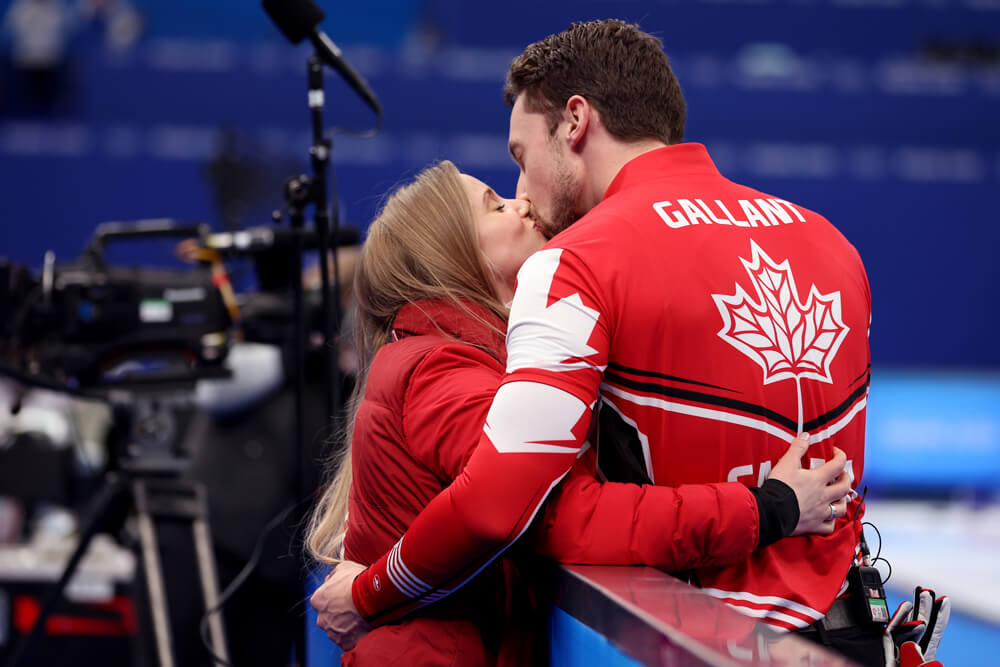
M
arc Kennedy was 21 years old when he started working at Kevin Martin’s curling store in Edmonton. Kennedy did everything there from working the cash to selling curling shoes to packing boxes of goods to ship across Western Canada. And in the back of the store, Kennedy would often find himself alongside Martin, sipping coffee and taping boxes and gabbing about curling.
“I got to pick his brain,” Kennedy says. “To be able to build a friendship with the greatest curler of all time away from curling — I was a pretty lucky guy.”
Six years later, in 2006, Martin asked Kennedy to join his team at second. John Morris was the team’s third, having thrown his lot in with Martin instead of following his plan to attend teacher’s college at Queen’s University. “That was probably one of the best decisions of my career,” Morris says, even though he never got that degree. Morris then convinced Martin to consider Hebert at lead. “I said, ‘There’s this youngster from Saskatchewan. He’s built like a brick shit house, he’s got a temper like a bull, but I love what he brings to the team. He’s a real competitor,’” Morris says. After a tryout, Hebert made the team.
The foursome went on to win 2010 Olympic gold, a world championship and two national titles. Morris left the team in 2013, and Martin retired the next year. But Hebert and Kennedy remained together, playing on Team Koe for the next quadrennial.
With Koe, they won world championship gold in 2016 and qualified for the Olympics two years later. But after they came home from the Games empty-handed, Kennedy took a step back from competitive curling, ending a 12-year run with Hebert. He wanted to spend more time with his family, including two young kids. Hebert understood it at the time. “But my immediate feelings were I was hurt and sad,” he says. “We had just come back from the Olympics after a disappointing performance in the playoff round there, and Marc was really our guy on that team, he was kind of our MVP most weeks, your model of consistency.”
A year later, Kennedy came back to curling to play as the out-of-province third for Team Jacobs, making an already strong team much stronger. “I was sour and I told him he was a dick, but he knew it was light-hearted,” Hebert says. “I hated the situation for a while when he came back with Jacobs. But I’m sure I was just jealous, right? I didn’t want Brad Jacobs’ team getting better.”
Kennedy says the pair remained friends, even through those hurt feelings. “I think Ben kind of thought that we would play together forever,” he adds.
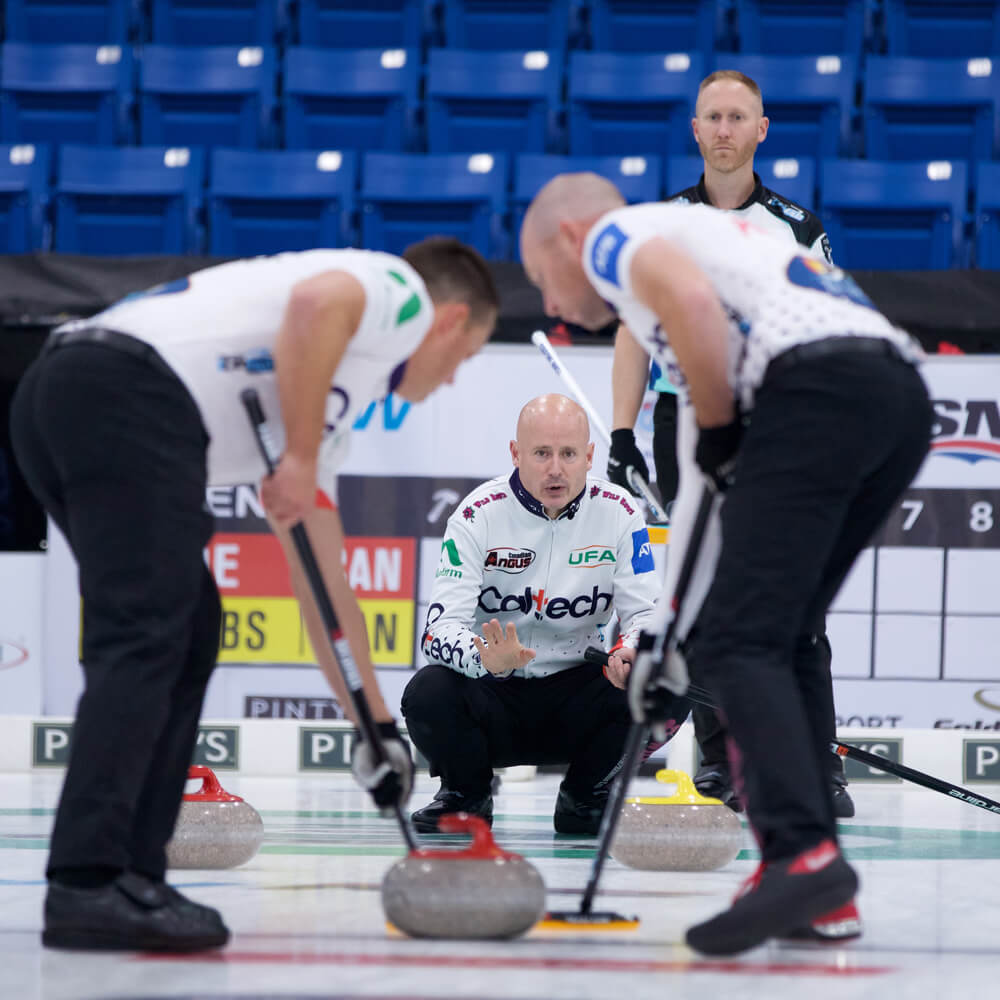
I
t’s March 14, 2022, and Hebert is driving home to Calgary from Lethbridge. Last night, the 39-year-old Team Koe lead lost his second straight national championship final, and this time, to Team Gushue. As he drives, Hebert is wallowing in what he calls “the depression den.”
His mood lifts significantly when his phone rings, and it’s his old pal, Marc Kennedy. The pair talk a bit about the Brier. And then Kennedy gets right to it: “I’m in,” he tells Hebert. He’d been waiting until after the Brier to decide on next season, not knowing yet if Team Jacobs would stay together. When he found out the team was disbanding, he knew he wanted to join Hebert, who’d pitched him on an all-Alberta team featuring Hebert at lead and Gallant at second.
“It feels a little bit like comin’ home,” Kennedy says later, of rejoining his long-time buddy. Hebert adds: “I know from playing with Marc and then not playing with Marc, sometimes you don’t know what you have until you lost it.”
Once Hebert knew Kennedy was in, he texted Gallant something he remembers like this: “Hey, congratulations on beating us in the Brier. F— you. Marc’s in. Looks like we’ve got ourselves a great team. Let’s send a note to Brendan [Bottcher] and see if he’s in.”
Bottcher was in, and within a day or two, the team was official. That it began with a lead and a second is unusual, but not when you look at Hebert and Gallant’s resumes. The idea started when Gallant told Hebert around February that he and Peterman were likely going to move west. “Players know who they want to play with, and there may have been some flirting and bait dangling along the way,” Hebert says of those early conversations, laughing. “But nothing was solidified until I heard from Brett that he was moving to Calgary for sure.”
Once Hebert, Gallant and Kennedy were on board, Hebert says there was no way Bottcher would say no, with all of them living in either Edmonton or Calgary. In Hebert’s opinion, Bottcher was the scapegoat in the breakup with Moulding, a move the lead says was “a team decision” the skip wore. “From the players and people that know him, he has the utmost respect from all of his peers for being a good player and a good guy and a championship skip.”
Adds Kennedy: “He looks to me like a young, talented guy that has an incredibly high ceiling.”
Bottcher is just 30, and he’s played in four Brier finals already. Though he, Hebert, Gallant and Kennedy have yet to be in the same room together, let alone on the ice, Hebert says he likes the team chemistry, and the fact they all have the same goal: To contend and be among the best teams in the world. “The talent of the four guys we have, I don’t think anybody’s questioning that. I would argue that we have maybe one of the best players in every position in the world. But you’ve got to gel as a team,” Hebert says. “The thing that I’m excited the most about is that we have a chance.”
Kennedy seconds that. And one thing he knows for sure: He has great team chemistry with the lead of this new-look Team Bottcher. Their families are even going on a vacation together this off-season.
“Ben’s my curling brother,” Kennedy says. “I think it’s nice that things are going to come full circle.”
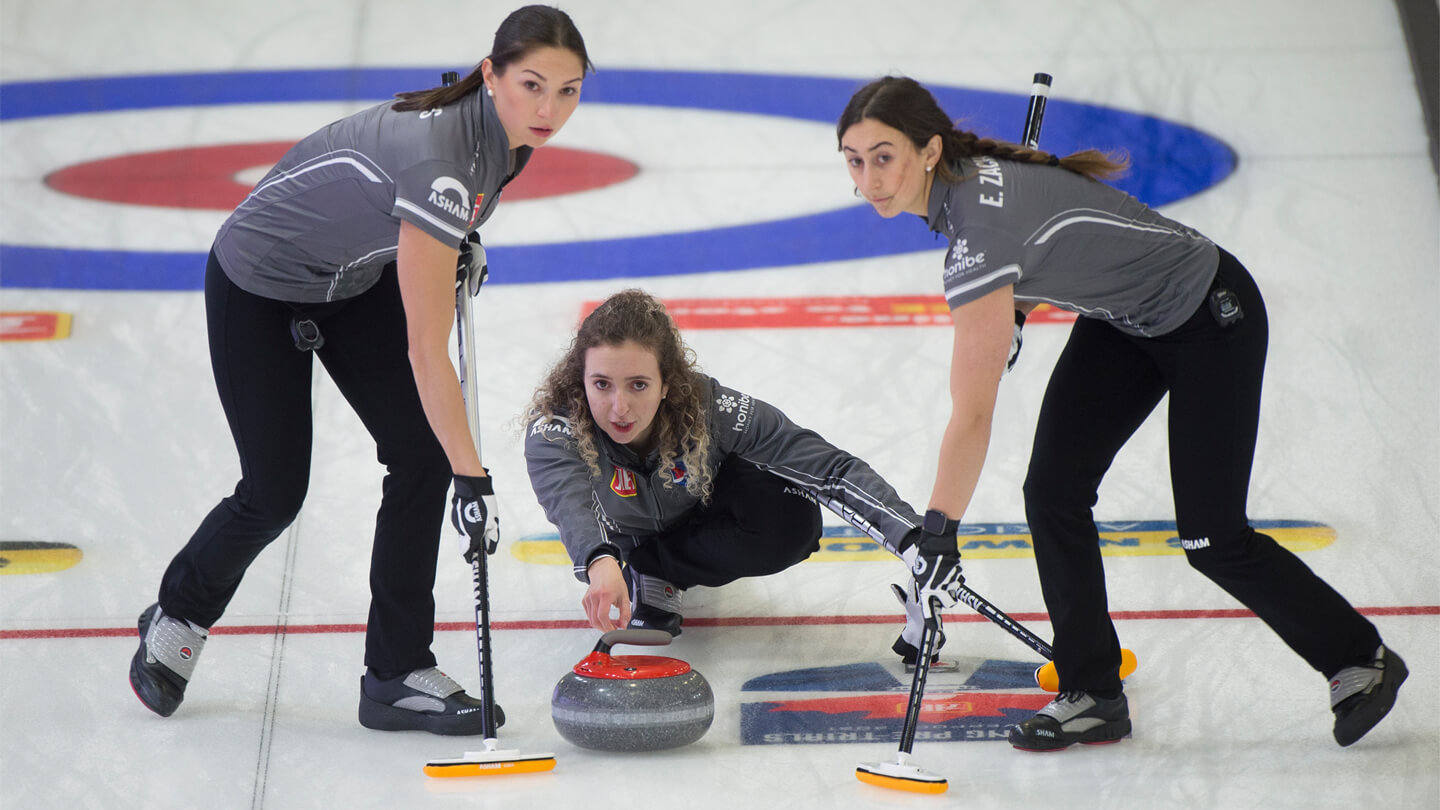
J
ennifer Jones is in the midst of her team’s second-last event together, and she’s sad to end her run with Lawes and Peterman and her long-time lead, Dawn McEwen, who’s retiring. But sitting in a conference room at her hotel in Toronto, it’s when she speaks about her future teammates that Jones’ eyes get glossy with tears.
It was clear from the first phone calls she had with Mackenzie, Emily, Burgess and Lenentine that this was going to be a good fit. “It was almost like an instantaneous epiphany of ‘Yes, this is going to be amazing,’” Jones says, smiling. “For me, it’s hard to find people who love curling the way I love curling. But I see it in each and every one of them. And I think that’s magic.”
For Team Zacharias, it was not only Jones’ incredible skill that sold them, but the way she saw their five-person team working. “She talked about nobody being the fifth, and her philosophy behind how she sees the sport of curling and how she sees all the teammates that she’s had in the past, and now us together as a team — it was really inspiring,” Mackenzie says. “Obviously she’s an incredible curler and has much more experience than the rest of us, but she didn’t make it seem that way. She made it seem like we’re all on the same playing field and we’re all equal, and I think that was super important, to become a team.”
Mackenzie recalls Jones asking, on one team call: “You’re not going to make me sweep, are you?” That got them all laughing. No, Jones won’t be sweeping. She’ll be skipping, while Mackenzie will move to third, which she’s happy to do given who’s throwing those last two stones. “I like to think I don’t have a super big ego, so I don’t mind stepping back and just taking that all in,” Mackenzie says. “To gain that experience, that’s so invaluable, to learn from the best in the game.”
Mackenzie now believes the goals she set for herself and her team are closer than she ever dreamt. “With her experience and her talent, Jenn is going to show us how to get there,” she says. “We can put ourselves in a very realistic position to see ourselves potentially going to the Olympics in 2026. And that’s so exciting.”
At some of the smaller events, Jones says she may be the team’s fifth, watching from the sidelines and getting that different perspective, meaning Mackenzie will be back at the helm. “I’m all about growth and trying to do the best I can and trying to be selfless about it,” Jones says. “If that will help us, then I’m more than willing to do it.”
This new iteration of Team Jones has yet to be on the ice together, and they plan to hammer out their schedule for next season when this one wraps up. Jones will sometimes travel to her hometown of Winnipeg for team training camps, and the rest of the team will sometimes come see her in Ontario. They’ll also get team practices in before and after events.
“I think what impresses me most, what I admire in them, is they’re willing to learn, they’re willing to change, they’re willing to open up and see what’s out there,” Jones says. “And not a lot of people are like that. I have so much admiration and respect for them already. I think I’m going to learn as much from them as they are from me.”
While there were those (dumb) rumblings that Jones was going to retire, nobody truly knew what her team was going to do at the end of this season. “They’re famous for keeping things very close to their chest until they’re ready to make an announcement,” says Team Einarson second, Shannon Birchard.
Mackenzie, Emily, Burgess and Lenentine had to keep the news a secret for about a week before it became official, aside from telling close family members. Their phones blew up when the news broke.
That Jones called up Burgess to ask about her team still renders Burgess speechless. “I can’t even describe it,” she says with a laugh. “Of all the people she could call, she called us? What?”
From afar, this looks a lot like a dream scenario for a young team, to have the greatest of all time as their skip. “Oh yeah, it seems pretty perfect on paper,” Mackenzie says. “I think that’s going to carry out, hopefully, into the season as well.”
“We always say, we don’t want to wish this curling season away,” Burgess adds. “But we just can’t wait for next season.”
Anil Mungal/GSOC; Lintao Zhang/Getty Images; Anil Mungal/GSOC; Sarah Stier/Getty Images; Anil Mungal/GSOC; Michael Burns/Curling Canada.




